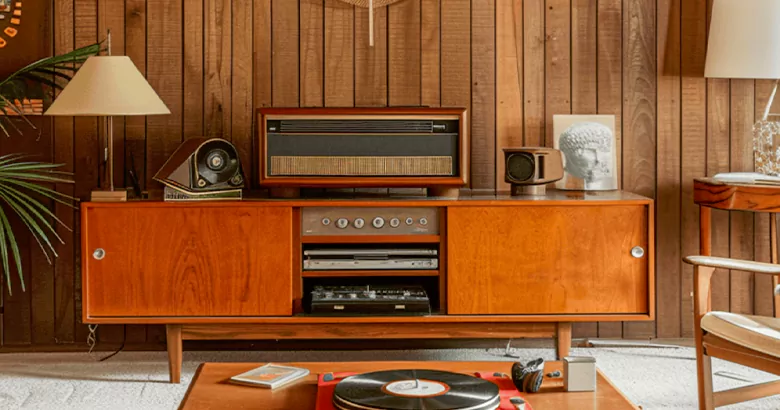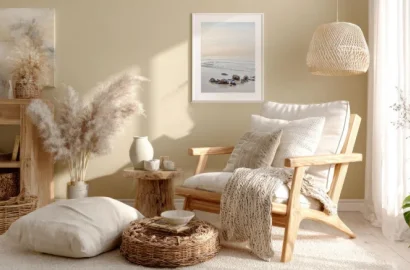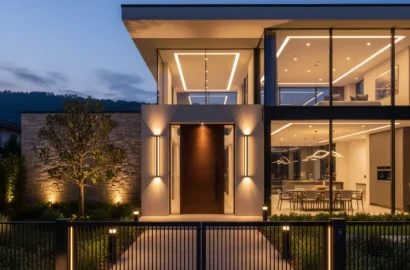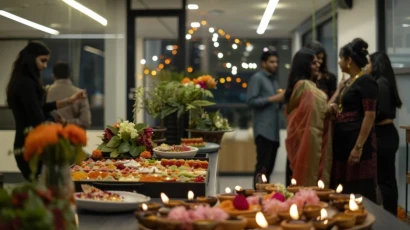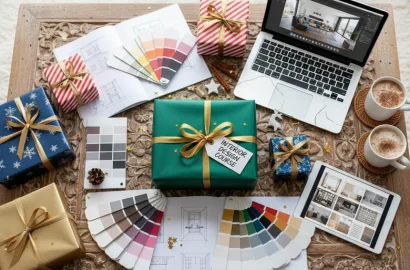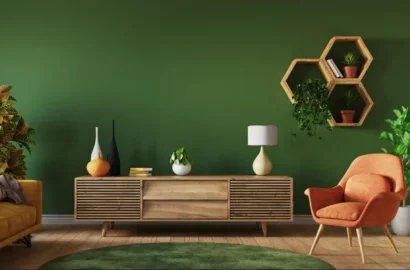Not sure where to start with modern furniture design ideas and trends this year? We’ve got you covered with our comprehensive guide.
Modern furniture trends will continue to evolve in 2025, with classic principles merging with innovative trends and sustainable solutions. Whether you’re considering a complete home redesign or looking to refresh some statement pieces, having a solid understanding of the trends and the principles of modern furniture design is an important place to start.
That’s why we’ve put together this guide. In it, you’ll learn the history behind modern furniture design, the principles at its heart, and the ideas and trends making waves in interior design circles this year. To finish up, we’ll be offering some hands-on advice for choosing modern furniture so you can be sure you get it right the first time.
We’ll be covering the following:
- What is modern furniture design?
- What are the main principles of modern furniture design?
- Top modern furniture design trends for 2025
- Furniture materials and finishes to watch in 2025
- Furniture styles to embrace in 2025
- Top tips for choosing modern furniture
- Conclusion
Let’s dive straight in!

What is modern furniture design?
Modern furniture design refers to furniture design that emerged in the early part of the 20th century and still heavily influences the contemporary interior design that we see today. Movements such as Bauhaus, Art Deco, Mid-Century Modern, and Minimalism played key roles in its swift rise in popularity, which saw residential and commercial spaces embrace the streamlined design and functionalism that defines this timeless aesthetic.
While still encompassing a fairly broad spectrum of design styles, modern furniture tends to be simple and practical with clean lines and sparse decoration. Natural materials like wood are often found in modern furniture design pieces, but newer materials such as metal, glass, and molded plastic are even more common. These next-generation components are typically formed to match more industrial or simple contours, moving away from traditional- ornate or embellished- furniture styles.
The central idea behind modern furniture is that form should follow function. In a substantial shift away from simply designing beautiful objects (as was common leading up to the 20th century), modern furniture designers seek to emphasize comfort, efficiency, durability, and functionality. This has led to lasting interior design trends that embrace modular, versatile, and adaptable pieces aligning with the fast-moving nature of modern life and a shift towards living in smaller spaces.
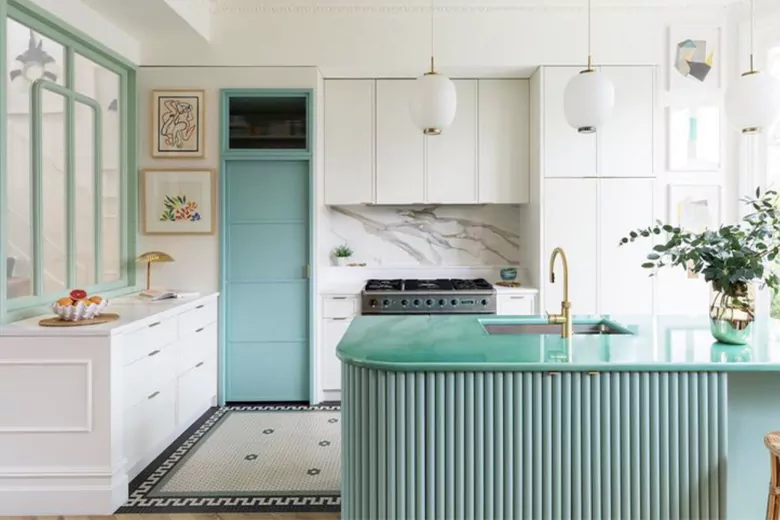
What are the main principles of modern furniture design?
Whether you’re taking on a huge interior design project, or simply freshening up one area or room in the house, understanding the principles of modern furniture design can help guide the selection and arrangement of furniture in your home. These principles were largely informed by the Bauhaus, Mid-Century Modern, and Minimalism design movements, among others.
1. Form follows function
The core principle of modern furniture is that form should always follow function. Moving away from elaborate, yet unnecessary embellishments, modern furniture design focuses on clean, functional shapes. Any aesthetic elements should enhance the utility of the existing object and never detract from it.
2. Simplicity and Minimalism
With a sharp focus on existing shapes, streamlined contours, and minimal to no ornamentation, modern furniture pieces are simple and elegant. This approach originates in a desire to minimize clutter and nurture a harmonious living space.
3. Use of new materials
The modern interior design movement celebrates innovative materials that include glass, molded plastic, plywood, and even steel. Not only are these materials durable and inexpensive, but they facilitate more structural experimentation.
4. Functionality and comfort
As we’ve seen, modern furniture stands out for its functionality and comfort. Ergonomics plays a key role in the design process, ensuring that, while still visually appealing, furniture serves a practical purpose that supports the different activities of all individuals in a space. For this reason, multi-purpose furniture is often seen in homes that are furnished with a modern design aesthetic in mind.
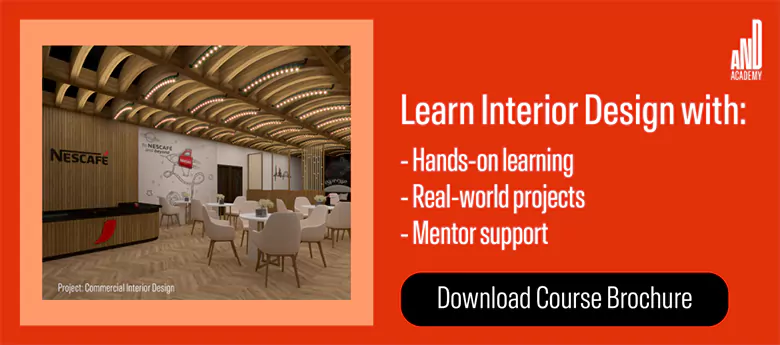
5. Honesty of materials
The “honesty of materials” refers to showcasing and celebrating the natural characteristics of a given material. Examples of this might include highlighting the grain pattern in a wooden countertop or making the veining in a marble desk visible.
6. Geometric shapes and patterns
Another common characteristic of modern furniture design is the use of geometric forms such as squares, rectangles, and circles. This aligns with other principles that state designers should avoid overly ornate or decorative elements and instead focus on function, order, and balance. Geometric shapes support this idea while still promoting an aesthetically pleasing environment.
7. Innovation and experimentation
Experimenting with new ideas, combining different materials, and challenging design norms are all part of the modern interior design playbook. This innovative approach frequently leads to more creative designs that effectively mirror societal change, modern needs, and advances in technology.
8. Architectural alignment
Modern furniture should complement the physical space in which it resides. This principle dictates that furniture pieces and the architecture of the building are equally integral to the interior design. Modern furniture pieces in particular should therefore align with open floor plans and large windows as these are common in modern architecture.
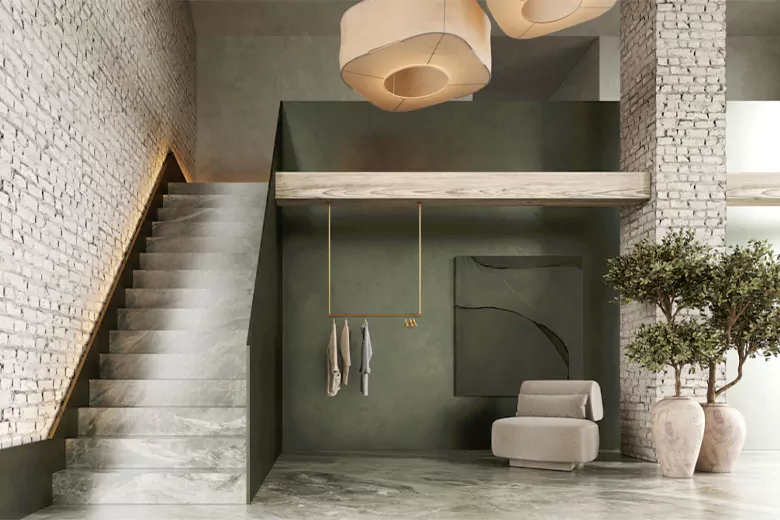
Top Modern Furniture Design Trends for 2025
If you’re looking to update your current furniture choices or redesigning every room in your house, take a peek at these modern furniture design trends to ensure yours is a highly fashionable home.
1. Modular and flexible furniture
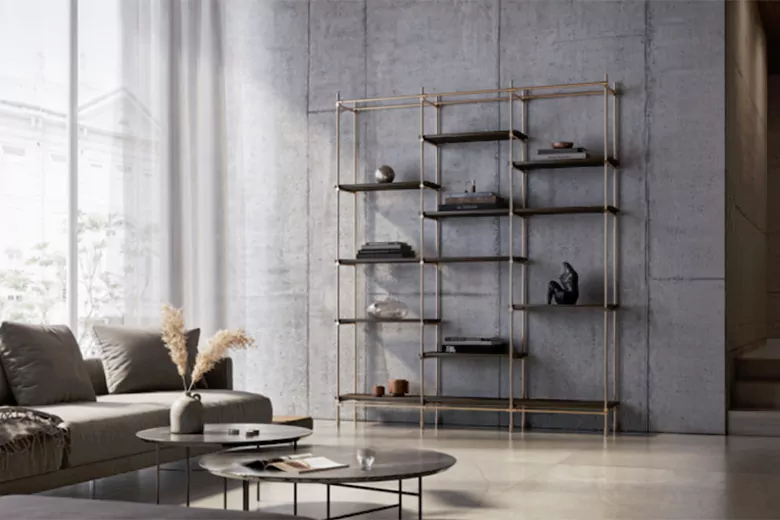
Modular and flexible furniture will dominate interior design trends in 2025. Thanks to the versatility and adaptability of modular designs, these pieces can effectively meet the evolving needs of modern and smaller households. Modular furniture can be rearranged, expanded, reduced, or reconfigured to align with different room layouts and activities. This makes this modern furniture design trend ideal for urban dwellers, in particular, who tend to prioritize functionality in more confined spaces. The beauty of modular and flexible furniture is that homeowners needn’t compromise on style, as, these days, sectional sofas, modular entertainment units, modular shelving units, and expandable tables, to name just a few, are as stylish as they are practical.
2. Sustainable and eco-friendly materials
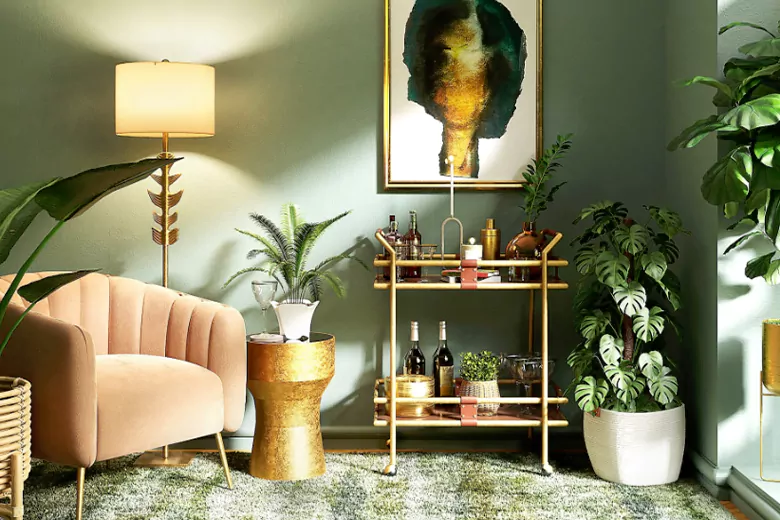
With climate concerns at an all-time high, sustainability remains a leading priority for both homeowners and furniture producers. Luckily, in 2025, we are likely to see a whole new era of sustainable materials and resources with which we can decorate and furnish our homes. Sustainably-sourced woods, recycled plastics, and responsibly-grown cotton and bamboo are going to become mainstays in modern furniture design. Low-VOC finishes and paints are growing in popularity thanks to their lower emission of harmful toxins. Circular design, a trend that sees products designed for easy recycling, is also getting significant airtime. What we’re likely to see over the coming year is how modern furniture is aligning with broader sustainability goals by incorporating durable, responsible-sourced, and renewable materials, offering high-quality and eco-conscious design solutions without compromising on style.
3. Minimalism and clean lines
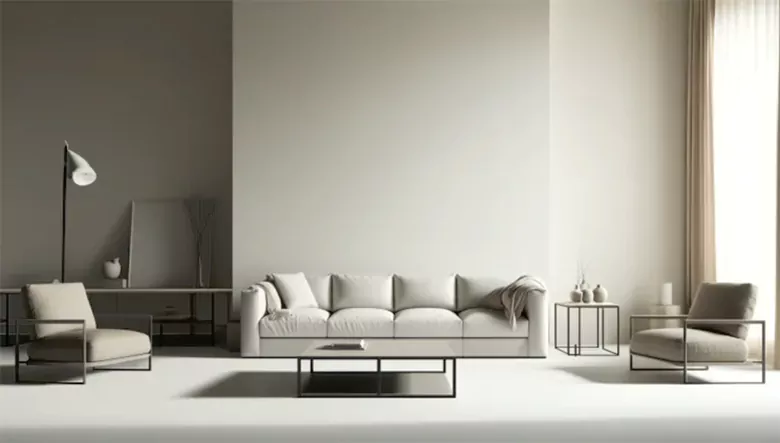
Love a clean, simple, clutter-free home? Then you’re bang on trend this year. Minimalism, with its emphasis on straight edges, simple silhouettes, and geometric precision, is continuing to make waves in the furniture design world this year. Minimalism isn’t just about homes looking good either. Minimalist furniture pieces are created for practicality too, with hidden storage compartments, seamlessly integrated technology, open shelving, and foldable options promoting both ease of use and flow of movement. Color-wise, whites, grays, and earth tones dominate this design aesthetic, contributing to a simple elegance that facilitates calm and tranquil living.
4. Bold accent furniture pieces
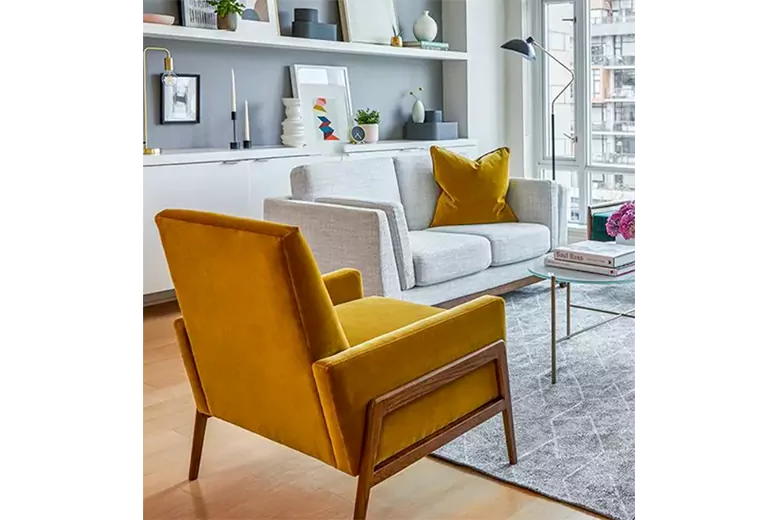
Bold accent pieces and furniture refer to eye-catching design elements such as oversized chairs, decorative trunks, colorful poufs, curvaceous floor lamps, woven wall hangings, and graphic area rugs–design components that make an immediate statement in any room. Typically positioned against a more neutral backdrop of pastel or natural hues, a bold accent furniture piece can bring welcome contrast to a space, and immediately draw in the eye. In 2025, we’re likely to see unexpected textures, dramatic patterns, and striking color combinations that turn everyday furniture into central focal points. Not only lifting the spirits, but bold items such as the ones we’ve outlined here complement minimalist surroundings and bring a touch of creative flair to modern interiors.
5. Curved and organic shapes
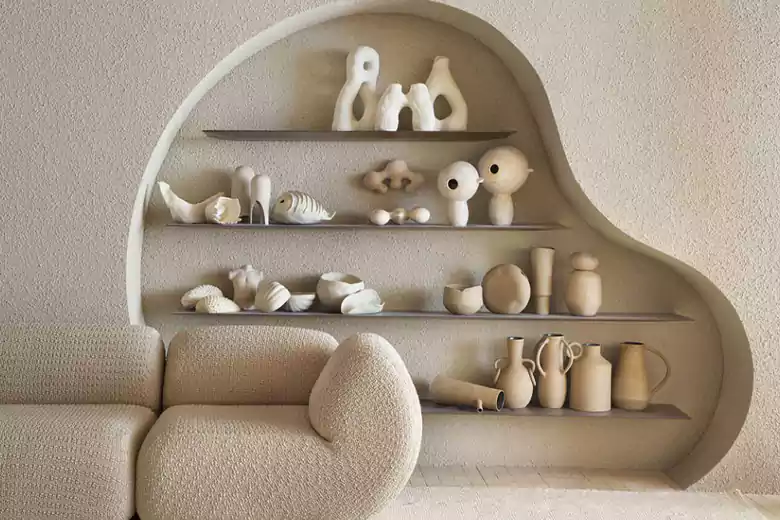
After many years of straight lines and sharp edges dominating interior design projects, organic shapes, and curved lines are taking precedence in both commercial and residential settings. Inspired by natural elements such as plants and rivers, this profound shift towards gentle curves and rounded edges sees flowing contours and sculptural forms evoke a sense of fluidity and comfort within a room. Proving particularly popular in seating choices such as sofas and armchairs, flowing lines are also seen in shelving and coffee tables. If you’re thinking about trying out more organically-shaped furniture in your home to promote comfort, tranquility, and relaxation, consider placing a U-shaped sectional in your living room, an armless curved bench in your kitchen, or an oval dining table in your dining room.
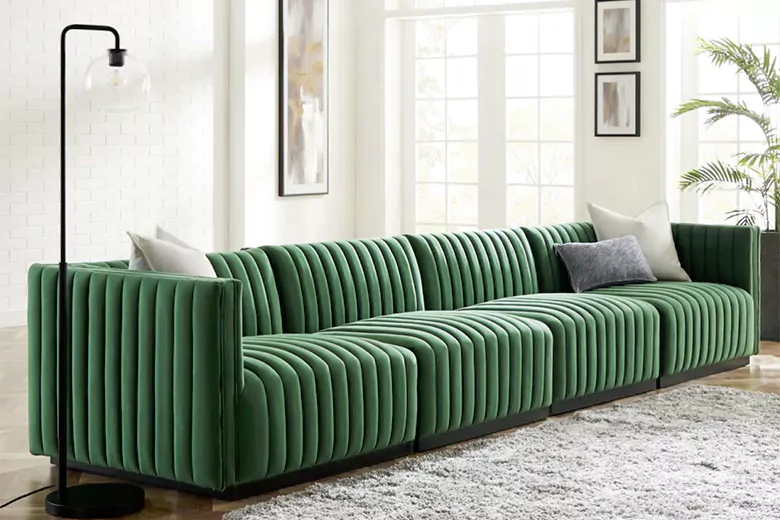
Furniture materials and finishes to watch in 2025
What are the furniture materials and finishes to look out for this year? From velvet sofas to natural combinations, furniture design is embracing both luxury and nature in 2025.
1. Velvet upholstery
Injecting luxury into any room, velvet upholstery is going to be big in design circles this year. With its rich, soft texture and range of color opportunities, velvet creates a dynamic look whether used for cushion covers, sofas, or armchairs. Perfect for statement or accent pieces, you may want to consider giving this classic design element a modern twist by experimenting with velvet variations such as smooth, plush, or crushed textures. Providing both high-end opulence and everyday durability, add velvet to your home furnishings this year for a splash of color and a touch of sophistication.
2. Glass and metal combinations
Whether part of a coffee table, a console table, or even a dining table, glass and metal combinations are coming to 2025, blending transparency and light with industrial strength. With the metal elements providing a striking contrast to the airy feel of glass, both polished and matte finishes in gold, brass, and chrome are going to gain traction this year. Glass and metal combinations work well in both modern and transitional interiors, thanks to their timeless appeal and long-lasting durability.
3. Natural wood and stone
Nature will continue to inspire interior design trends, with natural wood and stone materials set to dominate again this year. Highlighting both sustainability and natural beauty, wood brings warmth and texture to sideboards, countertops, tables, and cabinets, while stone offers resilience and elegance. When combined, these two elements create a wonderful balance of grounded luxury while seamlessly connecting interiors to nature.

Furniture styles to embrace in 2025
Blending classic influences with modern innovation to create functional, yet stylish spaces, these are the styles that we’re likely to see a lot more of over the next twelve months in residential and commercial settings.
1. Mid-Century Modern revival
Mid-Century Modern is an aesthetic found in interior design, product design, graphic design, architecture, and urban development. It is characterized by clean, simple lines, functional forms, and the honest use of materials. The style promotes the avoidance of unnecessary decoration while celebrating organic shapes, sleek wooden furniture, and minimalist profiles for key pieces such as sofas and coffee tables. While Mid-Century Modern is having something of a revival in 2025, designers are offering their own modern take on this classic. Expect to see more vibrant color palettes and innovative materials that give this design staple an even fresher finish.
2. Scandinavian influence
Emerging in the 1950s in Denmark, Finland, Norway, Sweden, and Iceland, Scandinavian design is a movement that epitomizes simplicity and functionality while promoting the use of natural materials. This hugely popular interior design style celebrates light, airy rooms, and practical, often minimalist pieces of furniture made of natural wood. This year, expect to see more focus on sustainability, artisanal pieces, and the “hygge” philosophy–an integral part of Scandinavian life that nurtures the idea of warmth, simplicity, and coziness.
3. Industrial chic
Taking its cue from former factories, urban lofts, warehouses, and other industrial spaces, industrial chic is an interior design trend that continues to gain popularity. The style incorporates a range of components such as:
- Weathered wood
- Building systems
- Steel beams
- Exposed brick
- Concrete floors
- Industrial lighting fixtures
It also sees the widespread adoption of utilitarian designs that celebrate the beauty and uniqueness of industrial materials overall. In 2025, industrial chic is likely to include more refined finishes and softer textures in order for it to be adaptable to a wider variety of spaces. Vintage metal lockers and leather chairs are also gaining traction, adding character to an industrial-style space without taking away from the originality of the aesthetic.
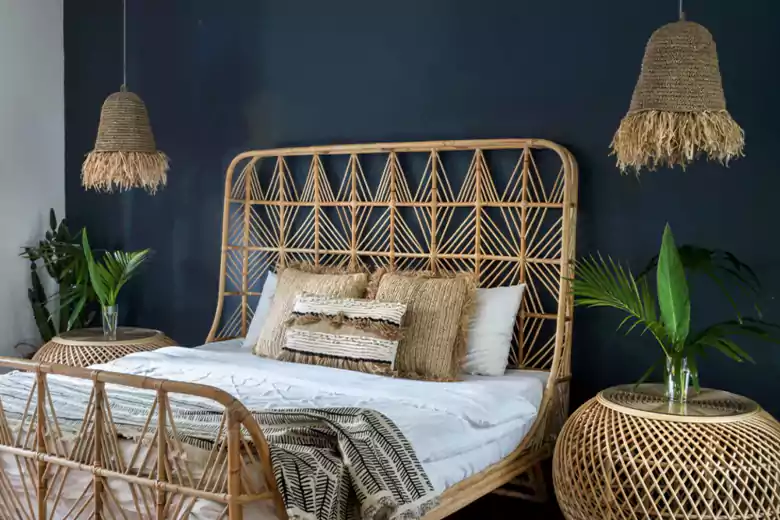
Top tips for choosing modern furniture
We’ve got some practical tips for you to consider before you start your interior design project.
1. Measure your space
It may seem obvious, but you’d be surprised how many people forget to measure the dimensions of their floors and walls before they start selecting furniture for a redesign. Make this the number one thing on your to-do list. Accurate measurements won’t just help you avoid the frustration of buying the wrong-sized furniture, it will also help you consider the flow of movement through the space.
2. Balance aesthetics with practicality
We’ve talked a lot about the balance of aesthetics and functionality in interior design this year, but it’s a point worth repeating. While it’s certainly tempting to think solely about how nice things look, functionality is equally important. For this reason, make sure your furniture serves its intended purpose! Things to consider include your current lifestyle, space-saving options, durability of materials, and multi-purpose spaces. If you get the balance right between form and function you can guarantee that your home feels both attractive and livable.
3. Make sustainable furniture choices
Making eco-conscious furniture choices can make a big impact on your overall carbon footprint. For this reason, try to source pieces made from renewable, recycled, or upcycled materials like bamboo or reclaimed wood and check out which brands use the most ethical production methods. Prioritizing sustainability is not just great for the planet, but also helps you create a home that reflects your values and ensures you have long-lasting, mindfully created pieces that elevate the entire space.
Conclusion
We hope you’ve found our guide to modern furniture design inspiring for your own home interior design. Whether you opt for the minimalist lines of Mid-Century Modern, go crazy with velvet upholstery, or simply start making more sustainable furniture choices this year, there’s a trend for every style, taste, and budget. To really keep your interior design choice en vogue we’d recommend prioritizing functionality. By simply embracing multi-purpose furniture and natural, durable materials you can ensure your home stays beautiful and usable over the short and long term.
Next Steps
If you enjoyed this article and would like to learn more about interior design, head back to AND Academy’s blog for more articles like this one. We also recommend you check out this project by AND Learner, Aquib Khan to get inspiration for your next interior design project.
In case you need further assistance, here are some resources to consider:
- Watch this session by Snehanshu Mukherjee, Founding Partner at T.E.A.M and Mansi Almadi, an Interior Designer at Studio Lotus
- Talk to a course advisor to discuss how you can transform your career with one of our courses.
- Check out our Interior Design courses - all courses are taught through live, interactive classes by industry experts.
- Take advantage of our scholarship and funding options to overcome any financial hurdle on the path of your career transformation.
Note: All information and/or data from external sources is believed to be accurate as of the date of publication.

